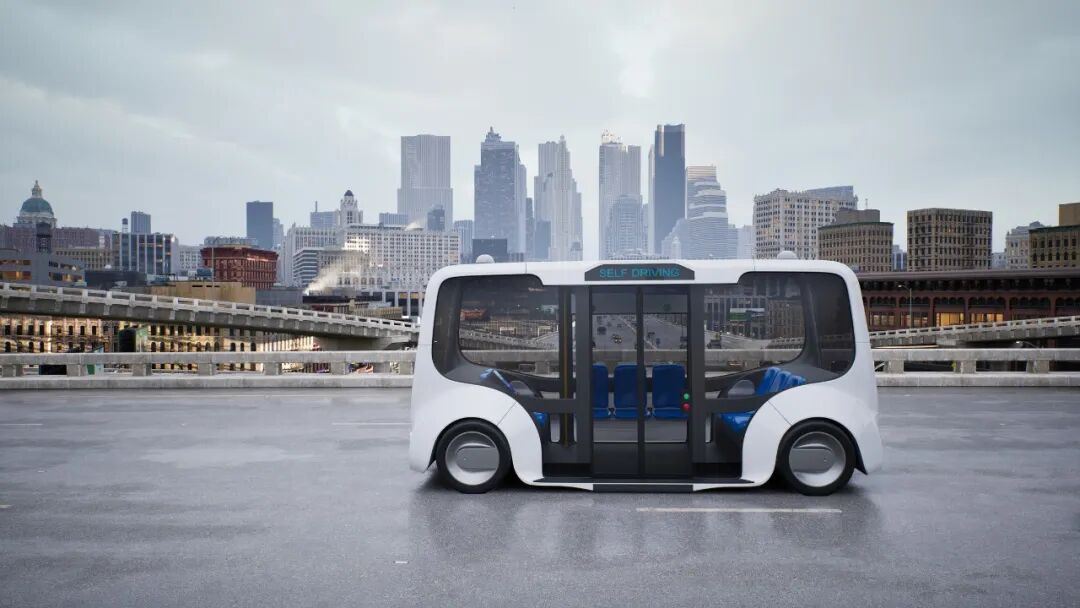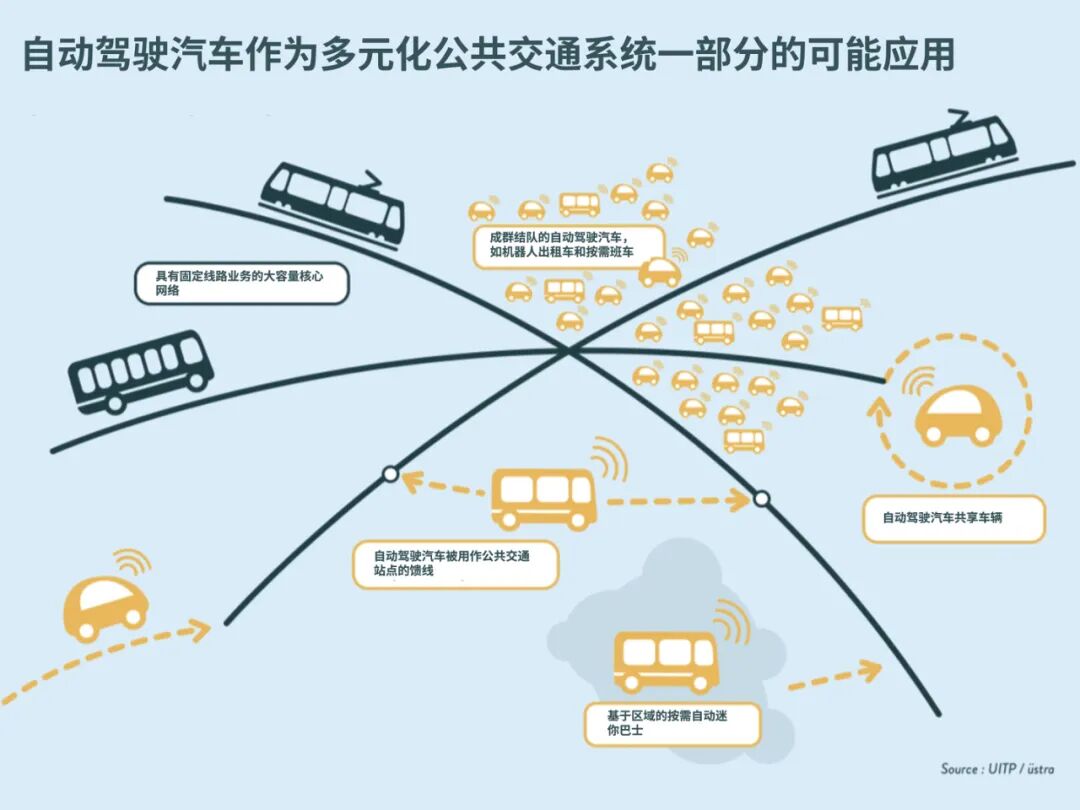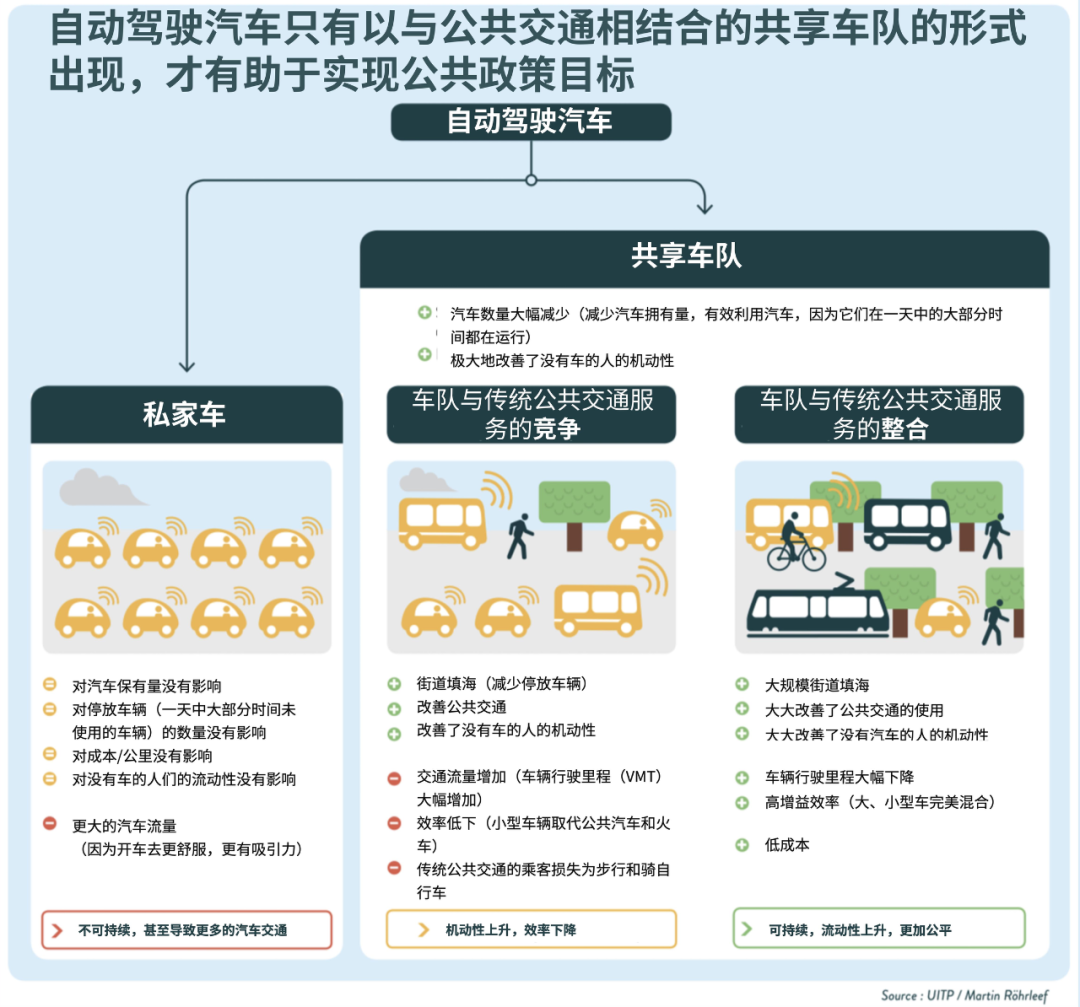Public transportation should still be the backbone of the city's transportation system.
Image source:Getty Images/iStockphoto
Mohamed Mezghani
Professor at MIT
Jinhua Zhao
Secretary-General of the International Association of Public Transport
Self-driving cars can offer numerous benefits, such as reducing operational costs and providing mobility solutions for people who are unable to drive or rely on public transportation.
However, simply replacing privately owned, driver-operated cars with self-driving vehicles would only exacerbate existing traffic issues, such as congestion.
Combining self-driving cars with public transportation— the backbone of urban transit systems—can enable the two to complement each other effectively.
Autonomous vehicles are at a critical juncture in their development.It can deliver significant benefits, including reducing operational costs, enhancing traffic safety and management, and providing mobility and independence to individuals who are unable to drive or use public transportation due to age, disability, or other factors.However, its impact still carries significant uncertainty. For instance, the simplest path forward—replacing privately owned, human-driven cars with autonomous private vehicles—would likely exacerbate existing transportation challenges, such as increased traffic congestion, reduced urban livability, and growing inequalities in mobility.Whether autonomous vehicles will enhance or undermine urban transportation depends on four key factors:- Should we continue with the private car model, or adopt a shared usage model?
- Can the deployment of self-driving cars be effectively coordinated with land-use planning to prevent further urban sprawl?
- Will self-driving cars operate under a fair and equitable pricing structure, such as imposing surcharges on phantom vehicles?
- Will autonomous vehicles integrate and coordinate with public transportation systems? This article delves deeply into this very aspect, highlighting the benefits of a collaborative autonomous vehicle–public transit deployment model.
Combining self-driving cars with public transportationWe advocate integrating self-driving vehicles with public transportation to create a collaborative self-driving vehicle–public transit deployment model.Public transportation should continue to serve as the backbone of urban transport systems, as autonomous vehicles and public transit can complement each other: while autonomous cars offer direct, flexible, and responsive services, public transit provides high-capacity, space-efficient, and scalable solutions.The integration of self-driving cars and public transportation fully leverages the strengths of both systems, addressing diverse urban mobility needs. However, we can’t take this complementary scenario for granted—self-driving vehicles and public transit are likely to compete with each other, potentially harming the interests of both in the long run.Opportunities exist for both regular services and special occasions. In terms of conventional services, self-driving vehicles can expand the reach of public transportation by offering efficient first-mile/last-mile solutions. Additionally, they can replace poorly performing, low-productivity bus routes in low-density or rural areas by providing on-demand micro-mobility options. Finally, an integrated self-driving vehicle–public transit system enables a reimagining of public transport network design and service planning, ultimately boosting efficiency. Crucially, increasing vehicle occupancy rates through this self-driving vehicle–public transit integration will be the key to success.In special circumstances, self-driving vehicles can be quickly deployed to provide emergency transportation services during major disruptions in public transit, and under certain conditions, autonomous cars may even be permitted to use bus-priority lanes—such as dynamically utilizing bus lanes without interfering with regular bus operations, but only when the occupancy rate of self-driving vehicles is high.Potential applications of self-driving cars as part of a diversified public transportation system.
Image source:UITP/Ustra
Integrating self-driving cars with public transportation requires the joint design and implementation across five key dimensions:- Information Integration: A Unified Data Platform Enables Seamless Communication Between Autonomous Vehicles and Public Transit Buses
- Pricing and Ticketing Integration: Streamlining the fare system to simplify access to autonomous vehicles and public transportation services
- Operations and Network Integration: Coordinating network design, service planning, and operational control to enhance efficiency and reliability.
- Business Model Integration: A collaborative business model across multiple service providers fosters innovation and shared value.
- Regulatory Integration: A coordinated regulatory framework for public and private mobility services, fostering the equitable and sustainable deployment of autonomous vehicles.
Autonomous vehicles can help achieve public policy goals only when integrated as a shared fleet alongside public transportation.
Image source:UITP/Martin Röhrleef
The Future Path of Urban TransportationWithout careful design, the large-scale deployment of self-driving cars could lead to significant external impacts.Without proper regulation, self-driving cars could increase vehicle-kilometers traveled (VKT) and exacerbate traffic congestion. The deployment of autonomous vehicles might discourage walking and cycling, leading to reduced physical activity and declining public health. An unregulated market for self-driving cars could also undermine political and financial support for public transportation. Moreover, self-driving vehicles may spur urban sprawl, further isolating city populations and deepening inequalities in mobility access.Local governments possess regulatory tools to guide the deployment of autonomous vehicles and address these external factors. Examples of regulatory mechanisms include land-use laws, ensuring that autonomous vehicle deployments align with sustainable land-use practices; policing powers, which help oversee autonomous vehicle operations to ensure safety and compliance; control over local streets, enabling efficient management of autonomous vehicle traffic while preventing congestion and preserving livability; data-management authority, allowing for the responsible collection and use of data to protect privacy and optimize mobility services; and public-transit powers, facilitating seamless integration between autonomous vehicles and existing public transportation systems.Despite significant financial investments, the autonomous driving industry has yet to demonstrate clear societal benefits—yet the integrated deployment of self-driving vehicles with public transportation holds the potential to help achieve these goals.By integrating self-driving cars into a traffic-centric urban mobility framework, the autonomous vehicle industry can not only contribute to city transportation systems but also reap significant economic rewards.City transportation stakeholders—including policymakers, public transit authorities, and the autonomous vehicle industry—must collaborate to design and implement an integrated self-driving car–public transit system, ensuring that the deployment of autonomous vehicles enhances, rather than undermines, overall urban mobility goals.Public institutions can publicly tender mobile mobility services to private autonomous vehicle operators through open competition, implementing standards for efficiency, equity, and sustainability—while also providing regulatory and financial support to the mobility services industry.Through the measures outlined above, we can help cities build urban transportation systems that are more inclusive, greener, and better suited to the needs of residents.
The above content solely represents the author's personal views.This article is translated from the World Economic Forum's Agenda blog; the Chinese version is for reference purposes only.Feel free to share this on WeChat Moments; please leave a comment below the post if you’d like to republish.
Editor: Wang Can
The World Economic Forum is an independent and neutral platform dedicated to bringing together diverse perspectives to discuss critical global, regional, and industry-specific issues.
Follow us on Weibo, WeChat Video Accounts, Douyin, and Xiaohongshu!
"World Economic Forum"







